-
 bitcoin
bitcoin $122659.385674 USD
0.52% -
 ethereum
ethereum $4484.113342 USD
-0.09% -
 bnb
bnb $1304.229256 USD
-0.85% -
 tether
tether $1.000204 USD
-0.03% -
 xrp
xrp $2.860636 USD
-0.51% -
 solana
solana $227.288799 USD
2.36% -
 usd-coin
usd-coin $0.999805 USD
0.01% -
 dogecoin
dogecoin $0.252837 USD
1.18% -
 tron
tron $0.341149 USD
1.12% -
 cardano
cardano $0.830507 USD
0.33% -
 hyperliquid
hyperliquid $45.792319 USD
0.04% -
 chainlink
chainlink $22.422164 USD
1.55% -
 ethena-usde
ethena-usde $1.000283 USD
0.01% -
 sui
sui $3.511389 USD
0.83% -
 stellar
stellar $0.385276 USD
-0.44%
What is the forced liquidation mechanism of Kraken contracts? How to avoid forced liquidation?
Forced liquidation on Kraken occurs when account balance falls below maintenance margin; traders can avoid it by monitoring positions, using stop-loss orders, and adjusting leverage.
Apr 29, 2025 at 08:21 pm
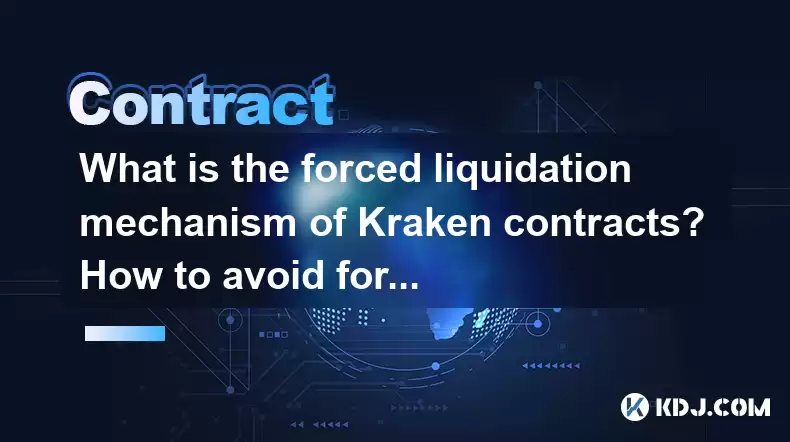
The forced liquidation mechanism of Kraken contracts is a critical aspect of trading on the platform, designed to protect both the trader and the exchange from excessive losses. Understanding this mechanism is essential for any trader looking to engage with Kraken's futures and options contracts. This article will delve into the specifics of how forced liquidation works on Kraken and provide detailed strategies on how to avoid it.
What is Forced Liquidation on Kraken?
Forced liquidation on Kraken occurs when a trader's position moves against them to such an extent that their account balance falls below the maintenance margin requirement. The maintenance margin is the minimum amount of equity that must be maintained in the trading account to keep the position open. When the account balance drops below this level, Kraken will automatically close the position to prevent further losses.
The process of forced liquidation is automated and designed to happen quickly to minimize the risk to the exchange. Kraken uses a risk engine that continuously monitors all open positions and account balances. If the account balance falls below the maintenance margin, the risk engine will initiate the liquidation process, selling off the position at the current market price.
How Does Kraken Calculate Liquidation Prices?
Kraken calculates the liquidation price based on the initial margin, the maintenance margin, and the current market price of the asset. The formula for calculating the liquidation price can be complex, but it essentially involves determining the point at which the account balance would fall below the maintenance margin. This calculation takes into account the leverage used, the size of the position, and the current market conditions.
For example, if a trader opens a position with a 10x leverage and the initial margin requirement is 10%, the maintenance margin might be set at 5%. If the market moves against the trader, the liquidation price would be the point at which the account balance drops below 5% of the total position value.
How to Avoid Forced Liquidation on Kraken
Avoiding forced liquidation requires careful management of your trading positions and a thorough understanding of the risks involved. Here are several strategies that traders can use to minimize the risk of forced liquidation:
Monitor Your Positions Closely: Regularly check the status of your open positions and the current market conditions. Use Kraken's trading platform to set up alerts for when your positions approach the liquidation price.
Use Stop-Loss Orders: Implementing stop-loss orders can help limit your losses and prevent your account balance from falling below the maintenance margin. A stop-loss order will automatically close your position if the market price reaches a certain level.
Adjust Your Leverage: High leverage can amplify both gains and losses. Consider using lower leverage to reduce the risk of forced liquidation. Lower leverage means you need less margin to maintain your position, making it less likely to be liquidated.
Maintain Adequate Margin: Always ensure that your account has sufficient funds to cover the maintenance margin. If you see your account balance approaching the maintenance margin, consider adding more funds or closing part of your position.
Diversify Your Portfolio: Spreading your investments across different assets can help mitigate the risk of a single position moving against you and triggering a forced liquidation.
Practical Steps to Set Up a Stop-Loss Order on Kraken
Setting up a stop-loss order on Kraken is a straightforward process that can help protect your positions from forced liquidation. Here are the detailed steps to set up a stop-loss order:
Log into Your Kraken Account: Navigate to the Kraken website and log in to your account.
Go to the Trading Page: Once logged in, go to the trading page where you can see your open positions and the current market prices.
Select the Position: Choose the position for which you want to set up a stop-loss order.
Click on 'Orders': On the trading page, click on the 'Orders' tab to access the order placement interface.
Choose 'Stop-Loss Order': From the list of order types, select 'Stop-Loss Order.'
Set the Trigger Price: Enter the price at which you want the stop-loss order to be triggered. This should be set at a level that gives you enough room to avoid unnecessary liquidation but also protects you from significant losses.
Set the Order Size: Specify the size of the order, which should match the size of your open position.
Review and Confirm: Double-check all the details of your stop-loss order, including the trigger price and order size. Once you are satisfied, confirm the order.
Monitor the Order: Keep an eye on your stop-loss order and the market conditions. You can always adjust or cancel the order if needed.
Understanding the Impact of Market Volatility
Market volatility can significantly impact the likelihood of forced liquidation. During periods of high volatility, prices can move rapidly, increasing the risk of your account balance falling below the maintenance margin. It's crucial to be aware of market conditions and adjust your trading strategy accordingly.
For instance, if you anticipate increased volatility due to an upcoming economic report or news event, you might want to reduce your leverage or set tighter stop-loss orders. Being proactive in managing your positions during volatile times can help you avoid forced liquidation.
The Role of Margin Calls
A margin call is a warning issued by Kraken when your account balance approaches the maintenance margin. Receiving a margin call is a signal that you need to take action to prevent forced liquidation. You can respond to a margin call by adding more funds to your account or by closing part of your position to bring your account balance back above the maintenance margin.
It's important to act quickly when you receive a margin call. The sooner you address the issue, the less likely you are to face forced liquidation. Regularly monitoring your account and responding promptly to margin calls can be a key part of your risk management strategy.
Frequently Asked Questions
Q: Can I set multiple stop-loss orders for the same position on Kraken?A: Yes, you can set multiple stop-loss orders for the same position on Kraken. This can be useful for managing different risk levels or for implementing a tiered exit strategy. Each stop-loss order will be triggered independently based on the specified trigger price.
Q: What happens if the market gaps through my stop-loss price on Kraken?A: If the market gaps through your stop-loss price, the order will be executed at the next available price. This means you might experience slippage, where the execution price is different from your specified stop-loss price. It's important to be aware of this risk, especially during periods of high volatility.
Q: How can I check my current margin levels on Kraken?A: To check your current margin levels on Kraken, log into your account and navigate to the 'Portfolio' or 'Positions' section. Here, you will see detailed information about your open positions, including the current margin levels and any margin calls. Regularly reviewing this information can help you stay on top of your account's status and avoid forced liquidation.
Disclaimer:info@kdj.com
The information provided is not trading advice. kdj.com does not assume any responsibility for any investments made based on the information provided in this article. Cryptocurrencies are highly volatile and it is highly recommended that you invest with caution after thorough research!
If you believe that the content used on this website infringes your copyright, please contact us immediately (info@kdj.com) and we will delete it promptly.
- XRP Transfer, Altcoin Rally, and Crypto Movement: What's Shakin' in the Crypto Space?
- 2025-10-09 15:05:12
- BNB Chain Memecoin Goldmine: Hype or Sustainable Growth?
- 2025-10-09 15:05:12
- XRP, ASTER Surge, and Crypto Presales: What's the Haps?
- 2025-10-09 15:10:01
- XRP Treasuries Soar as Reliance Global Joins the Party: A New Era for Corporate Reserves?
- 2025-10-09 15:10:01
- XRP ETF Hopes and Binance's Crypto Reserves: What's the Buzz?
- 2025-10-09 15:10:01
- YZi Labs' Billion-Dollar Bet: Fueling the BNB Ecosystem's Future
- 2025-10-09 15:10:13
Related knowledge

How to reduce trading fees for Bitcoin contracts?
Oct 09,2025 at 02:37pm
Understanding Bitcoin Contract Trading Fees1. Trading fees on Bitcoin contracts are typically charged by exchanges for executing buy and sell orders. ...
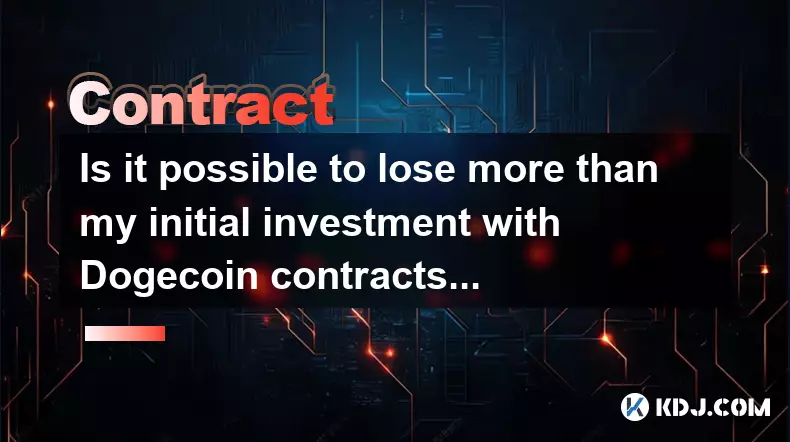
Is it possible to lose more than my initial investment with Dogecoin contracts?
Oct 09,2025 at 02:00pm
Understanding the Risks of Dogecoin Futures Trading1. Trading Dogecoin futures contracts introduces financial exposure that extends beyond the origina...
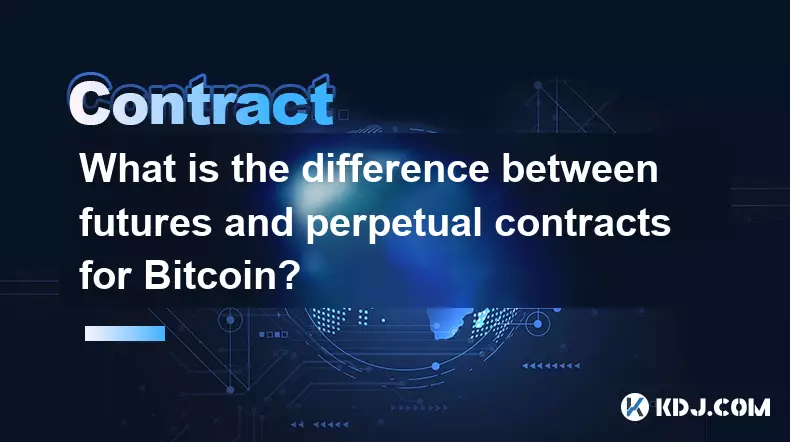
What is the difference between futures and perpetual contracts for Bitcoin?
Oct 02,2025 at 11:54pm
Understanding Bitcoin Futures Contracts1. Bitcoin futures are derivative instruments that allow traders to speculate on the future price of Bitcoin at...
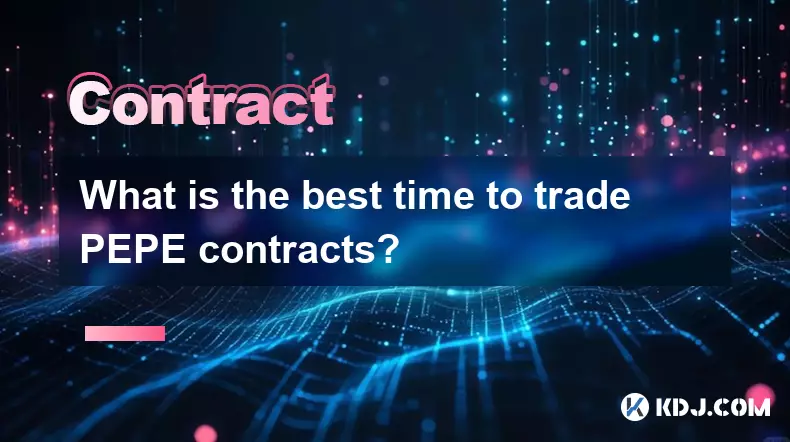
What is the best time to trade PEPE contracts?
Oct 03,2025 at 11:54am
Understanding PEPE Contract Volatility1. PEPE contracts exhibit extreme price fluctuations due to their meme-based nature and low market cap. Trading ...
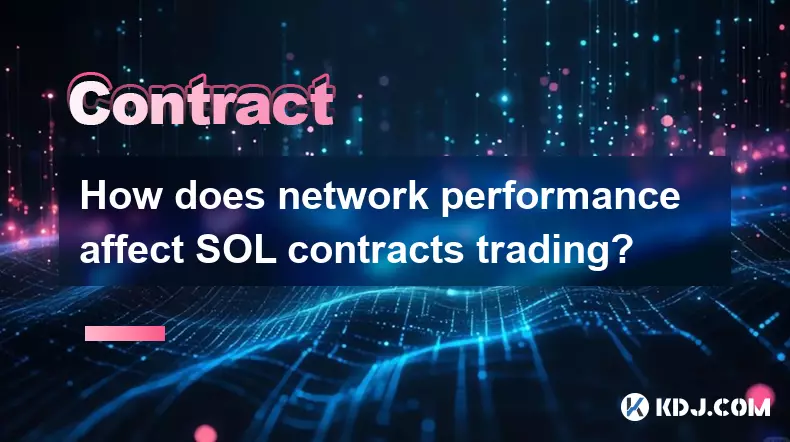
How does network performance affect SOL contracts trading?
Oct 09,2025 at 10:54am
Impact of Network Latency on SOL Contract Execution1. High network latency can delay transaction confirmations, directly affecting the timing of contr...
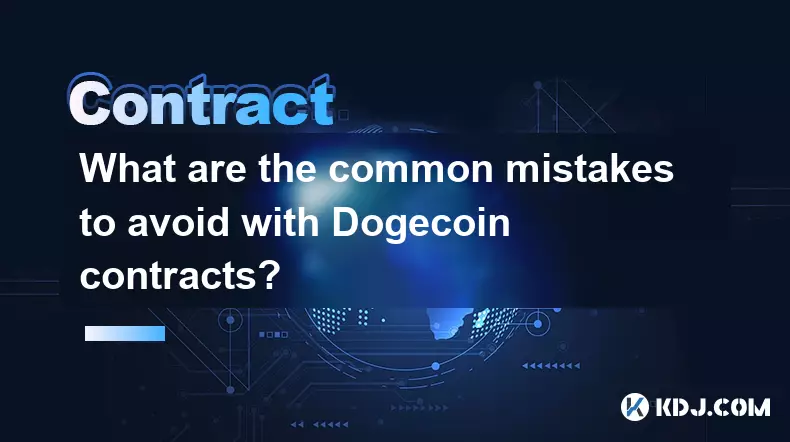
What are the common mistakes to avoid with Bitcoincoin contracts?
Oct 03,2025 at 08:54am
Emerging Trends in the Cryptocurrency Market1. Decentralized finance (DeFi) platforms continue to expand their influence across the blockchain ecosyst...

How to reduce trading fees for Bitcoin contracts?
Oct 09,2025 at 02:37pm
Understanding Bitcoin Contract Trading Fees1. Trading fees on Bitcoin contracts are typically charged by exchanges for executing buy and sell orders. ...

Is it possible to lose more than my initial investment with Dogecoin contracts?
Oct 09,2025 at 02:00pm
Understanding the Risks of Dogecoin Futures Trading1. Trading Dogecoin futures contracts introduces financial exposure that extends beyond the origina...

What is the difference between futures and perpetual contracts for Bitcoin?
Oct 02,2025 at 11:54pm
Understanding Bitcoin Futures Contracts1. Bitcoin futures are derivative instruments that allow traders to speculate on the future price of Bitcoin at...

What is the best time to trade PEPE contracts?
Oct 03,2025 at 11:54am
Understanding PEPE Contract Volatility1. PEPE contracts exhibit extreme price fluctuations due to their meme-based nature and low market cap. Trading ...

How does network performance affect SOL contracts trading?
Oct 09,2025 at 10:54am
Impact of Network Latency on SOL Contract Execution1. High network latency can delay transaction confirmations, directly affecting the timing of contr...

What are the common mistakes to avoid with Bitcoincoin contracts?
Oct 03,2025 at 08:54am
Emerging Trends in the Cryptocurrency Market1. Decentralized finance (DeFi) platforms continue to expand their influence across the blockchain ecosyst...
See all articles










































































